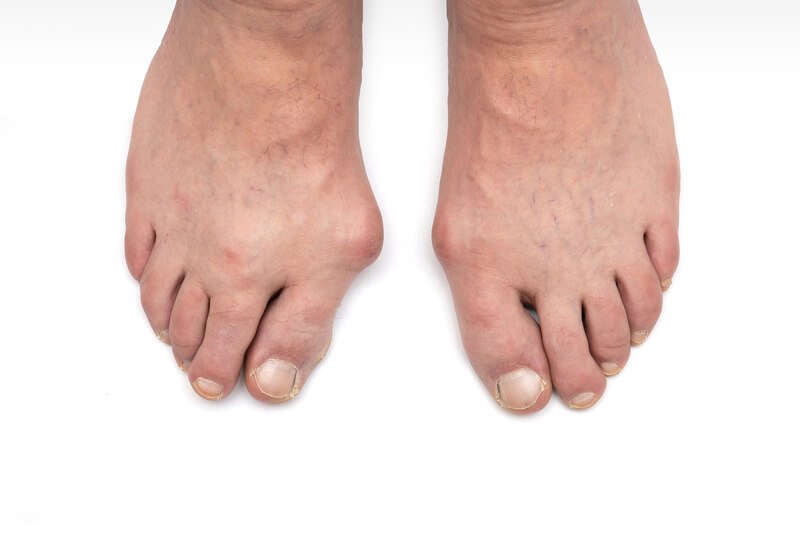Bunions
A bunion is a bump on the base of the big toe joint. Bunions are caused when the bone at the joint moves and bends toward the other toes. The big toe may even overlap the others as this movement continues.
Bunions are primarily due to genetic factors. They can also become painful over time due to trauma from ill-fitting shoes and poor foot structure.
You may even experience severe pain with Bunions because this big toe joint carries much of the body’s weight. Bunions run in families because of an inherited foot type that includes poor foot mechanics. Wearing tight or narrow shoes can aggravate the bunion. Those with flat feet or low arches are prone to bunions, as are people with arthritis or inflammatory joint disease.
Treating Bunions
To relieve the discomfort of a bunion, apply a bunion pad around the bump. Wear wide shoes with a deep toe box. Avoid shoes with heels more than 2 inches tall. You can apply ice packs often during the day to reduce the inflammation.
However, bunions will not go away – in fact, they will get larger and more painful without treatment. The earlier that podiatric treatment begins, the greater chance that your pain may be resolved without surgery.
Our goals are to relieve the pressure on the bunion and slow its progression. Padding and taping can relieve pain and keep the foot in a normal position. Cortisone injections and anti-inflammatory medication can ease symptoms.
Custom-fitted orthotics can relieve symptoms and prevent worsening of the deformity. Physical therapy and ultrasound therapy can also relieve inflammation and pain.
For severe cases, surgery may be necessary to repair the joint and relieve pressure.
Pain, swelling or redness
Developing hammertoes
Painful and restricted big toe motion
Symptoms
Callus or bump on the base of the big toe on the outside of the foot
Irritated skin including corns where the first and second toes overlap
Callus development under the ball of the foot

